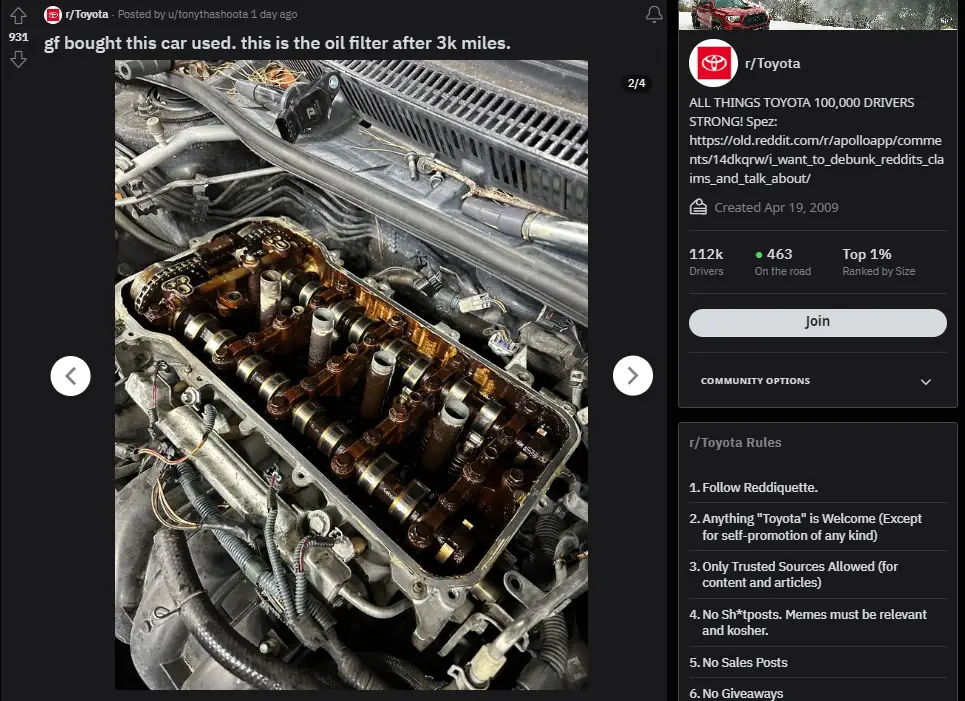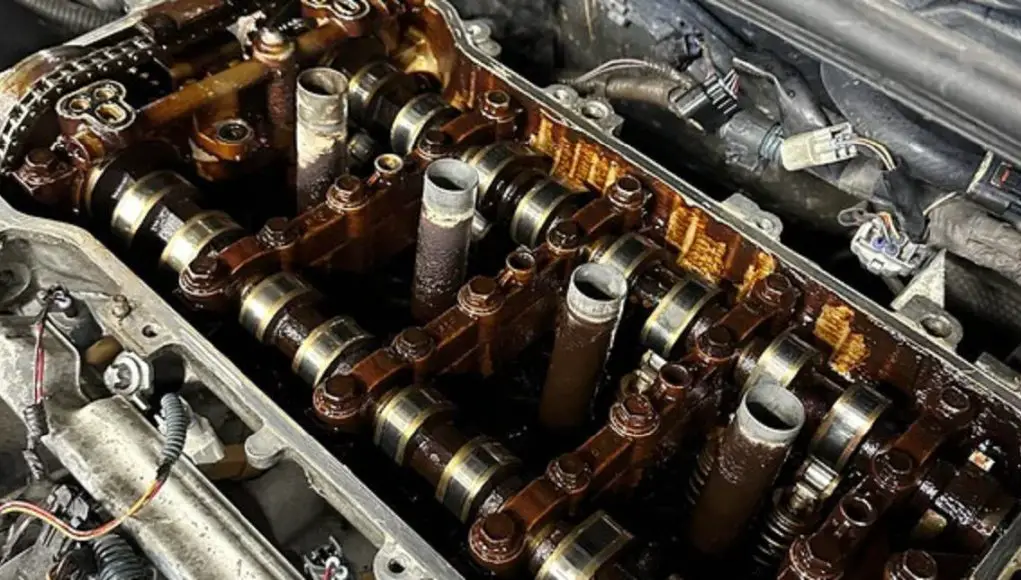This method is safe to use on all makes and models.
Browsing the /r/Toyota subreddit and I came across a post from /u/Tonythashoota who recently did some maintenance work on his girlfriend’s new-to-her 2009 Toyota Corolla only to find out the engine was filled with nasty sludge.
Not sure what to do next, he asked other Toyota owners, what do?
Their post is linked here, with screenshots of what he found below.


“Recently just did a valve cover gasket, plugs, and coils on this Corolla,” OP begins his caption.
“I’m determined to get this car running perfectly. There’s so much sludge I need to get rid of, though. If it’s not one thing, it’s another.”
The Corolla only has 125,000+ miles, which is nothing for these cars.
The first photo shows a sludge-filled oil filter that was put in by OP 3,000 miles ago, the last time this car got an oil change.
This amount of sludge on the filter and in the crankcase is indicative of the previous owner not changing the oil enough, if at all.
Sludge is broken down engine oil plus carbon deposits that no longer lubricates and protects, which builds up in the inner workings of an engine.
You’d think with this amount of sludge, his girlfriend would notice something’s wrong but such is not the case.
“As of right now, she drove 4 hrs one day and 4hrs the next day. And she said (it) runs great.”
Browsing through the helpful replies and, while there were a lot of upvotes on people recommending various engine flushes and even Seafoam, one solution caught my eye because it’s so simple, safe, and sounds effective.
According to /u/MarktSpot,
“My advice is, do NOT use a flush or detergent like seafoam or anything of that sort. If the motor has a heavy buildup of sludge, using these products will breakup the sludge but, then you will have large chunks of sludge in your oil, and it will clog up the VVT ports and other oil passages.”
“If I were you, I would put new oil and filter in every 500 miles until the oil you drain out looks fairly new”
If you didn’t catch that last statement, he’s suggesting to change the oil and filter every 500 miles.
That’s it, it’s that simple.
Almost all modern oils already have an additive package with, among other things, detergents to “neutralize varnish and sludge to help keep surfaces clean and deposit-free.“
We can already see those detergents doing its thing, freeing enough sludge to clog that new oil filter.
So, if you’re ever like OP and find yourself overwhelmed by how much sludge an engine has, this is an uncomplicated and straightforward way to deal with it.
It might take you hundreds of dollars in oil, filters, and time, but, you’ll be left with an engine that’s relatively sludge free, ready for whatever you throw at it.



